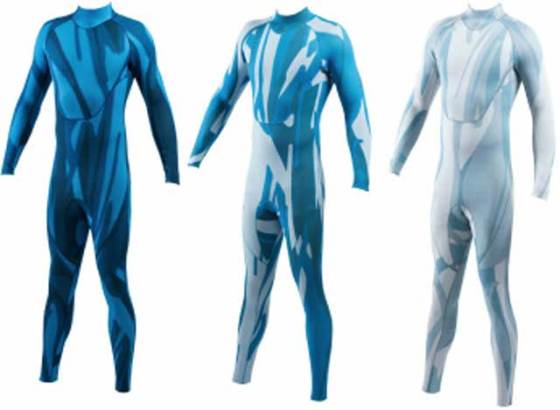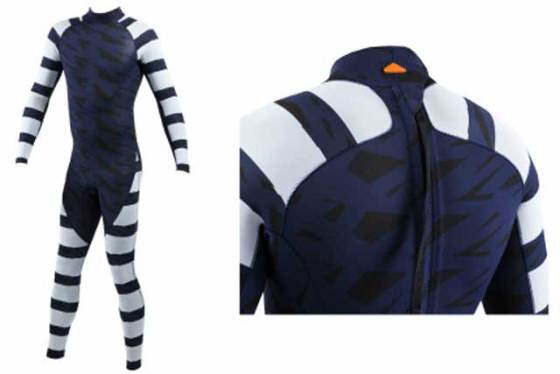Researchers found that certain patterns might be used to repel sharks
 Collaboration between world-leading shark researchers at the University of Western Australia (UWA) and researchers at biotechnology company Shark Attack Mitigation Systems (SAMS) resulted in development of wetsuits designed to either confuse sharks or make surfers and divers invisible to them. In order to create wetsuits that may decrease life-threatening attacks on humans, researchers have used scientific data about sharks’ vision.
Collaboration between world-leading shark researchers at the University of Western Australia (UWA) and researchers at biotechnology company Shark Attack Mitigation Systems (SAMS) resulted in development of wetsuits designed to either confuse sharks or make surfers and divers invisible to them. In order to create wetsuits that may decrease life-threatening attacks on humans, researchers have used scientific data about sharks’ vision.
Every year around 100 shark attacks are reported worldwide. In 2011 there were 118 recorded attacks, out of which seventeen attacks ended tragically. Western Australia is now recognized as the world’s deadliest location for sharks – with five fatal attacks over the last two years.
The research team has made a number of significant scientific discoveries relating to shark sensory systems, including the fact that sharks see in black and white, but the shading and perception of it is very acute. Although sharks use a number of senses to locate prey, vision is the crucial sense in the final stage of an attack. The first shark repellent suits are based on scientific data of the vision, neurology and behavior of predatory sharks.
SAMS technology combines specific contrast of colors, various sizes and patterns in order to create different effects at various depths and distances underwater. It also takes into account the reflective spectrum of light and colors in the water and how sharks perceive objects in the water.
Researchers designed two types of wetsuits that use a specific combination of colors and patterns: the ‘cryptic’ wetsuit and the ‘warning’ wetsuit. The cryptic wetsuit allows the wearer to blend with background colors in the water, making it difficult for a shark to detect its wearer. The warning wetsuit makes the user appear highly visible by using disruptive and high contrast banding patterns. This wetsuits presents the wearer as unlike shark prey, even something poisonous or unpalatable. SAMS technology has other applications beyond wetsuits such as surfboard stickers, skins and stickers for dive tanks, as well as kayaks.
Initial testing of SAMS technology was conducted in a live environment by the UWA’s Oceans Institute off the coast of Western Australia. Testing involved filming of two tiger sharks’ behavior in presence of a control bait covered in ordinary black neoprene and identical bait, covered in the SAMS “cryptic colored” pattern. The sharks completely savaged the control bait, while the bait covered with the SAMS pattern was left untouched.
Even though the results of this testing were encouraging, researchers could not claim that the suits were a failsafe protection against shark attacks. Also, the baits used in tests were inanimate objects, hence they do not make splashing sounds and swimming movements like humans. While the researchers claim vision is the crucial sense in the final stage of an attack, other studies have shown that sharks are attracted to movements, so baits were not the most reliable model for testing of SAMS technology.
According to the SAMS researchers, testing of this technology will be an ongoing process over many years to come. However, they can never be 100 percent sure that these wetsuits will prevent a shark attack because we are dealing with wild animals in their natural environment. In order to counter the keen scent of smell sharks posses, the researchers plan to develop a wetsuit that will have a special scent which deceives the shark.











Leave your response!